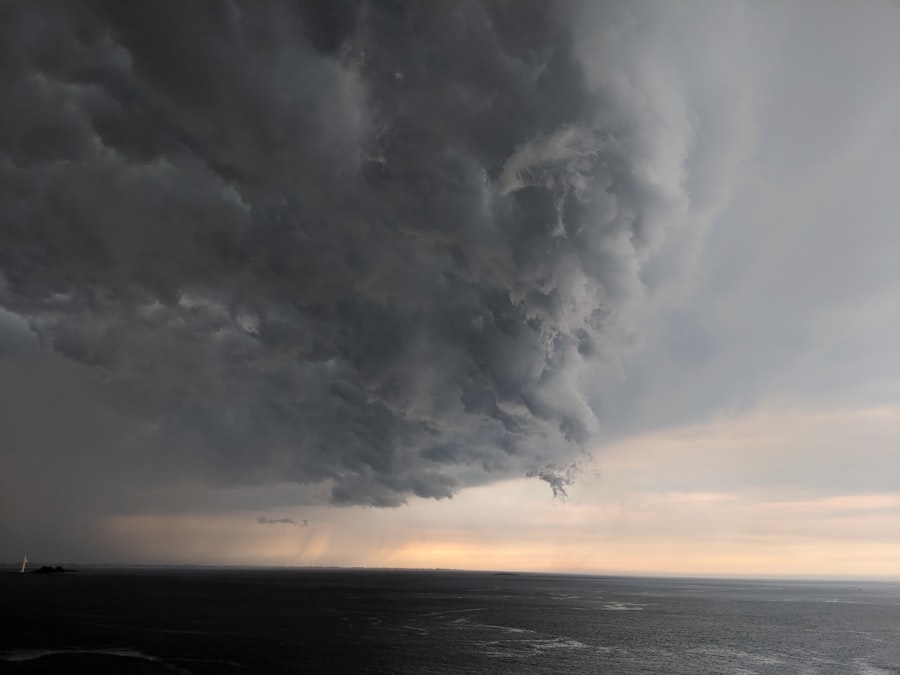Tornadoes are among nature’s most violent phenomena, capable of causing catastrophic destruction in mere moments. As I delve into the intricacies of these powerful storms, I find it essential to grasp their formation and behavior. Tornadoes typically develop from severe thunderstorms, particularly supercells, which are characterized by a rotating updraft known as a mesocyclone.
Understanding these elements helps me appreciate the unpredictability of tornadoes and the urgency of preparedness. The impact of tornadoes can be devastating, with winds exceeding 300 miles per hour in the most extreme cases.
I often reflect on the aftermath of tornadoes that have ravaged communities, leaving behind a trail of destruction that can take years to recover from. The Enhanced Fujita Scale categorizes tornadoes from EF0 to EF5 based on the damage they inflict, with even lower-rated tornadoes capable of causing significant harm. By recognizing the potential severity of these storms, I am motivated to take proactive measures to protect myself and my community.
Establishing a Tornado Emergency Team
Building a Diverse Team
This team would ideally include representatives from various sectors, such as local government, emergency services, schools, and community organizations. By collaborating with diverse stakeholders, I can foster a comprehensive approach to tornado preparedness that addresses the needs of all community members.
Defining Roles and Responsibilities
Once the team is established, we would focus on defining roles and responsibilities. I believe that clear communication and delegation are vital for an efficient response during a crisis.
Regular Meetings and Adaptation
Regular meetings would allow us to assess our progress and adapt our strategies as needed. By working together as a cohesive unit, I am confident that we can enhance our community’s resilience against tornado threats.
Designating Safe Shelter Areas

Identifying safe shelter areas is a fundamental aspect of tornado preparedness that cannot be overlooked. I often think about the importance of having designated locations where individuals can seek refuge during a tornado warning. These shelters should be easily accessible and equipped to accommodate a large number of people.
Ideally, I would advocate for using basements or storm cellars as primary shelters since they provide the best protection from flying debris and extreme winds. In addition to physical shelters, I recognize the need for alternative options for those who may not have access to traditional safe spaces. For instance, I would encourage the identification of interior rooms on the lowest floors of buildings, away from windows, as secondary shelter areas.
It is essential to communicate these locations clearly to the community so that everyone knows where to go in case of an emergency. By ensuring that safe shelter areas are well-marked and easily accessible, I can help alleviate panic and confusion when a tornado strikes.
Communicating the Tornado Emergency Plan
| Metrics | 2019 | 2020 | 2021 |
|---|---|---|---|
| Number of employees trained | 150 | 160 | 170 |
| Number of emergency drills conducted | 5 | 6 | 7 |
| Number of communication channels used | 3 | 4 | 5 |
Effective communication is paramount when it comes to executing a tornado emergency plan. I understand that timely and accurate information can save lives during a crisis. To facilitate this, I would prioritize developing a comprehensive communication strategy that includes multiple channels for disseminating information.
This could involve utilizing social media platforms, local news outlets, and community bulletin boards to ensure that everyone receives updates about impending tornado threats. Moreover, I recognize the importance of reaching out to vulnerable populations who may not have access to traditional communication methods. This includes individuals with disabilities, the elderly, and those who may not speak English fluently.
By collaborating with local organizations that serve these communities, I can ensure that critical information is translated and delivered in a manner that is accessible to all. In doing so, I hope to foster a sense of inclusivity and preparedness within my community.
Conducting Tornado Drills
Regularly conducting tornado drills is an essential component of any effective emergency preparedness plan. I believe that practice makes perfect; by simulating real-life scenarios, individuals can become familiar with the procedures they need to follow during an actual tornado event. These drills not only help reinforce knowledge but also build confidence among participants, allowing them to respond more effectively when faced with a real threat.
During these drills, I would emphasize the importance of following established protocols for seeking shelter and remaining calm under pressure. It is crucial for everyone involved to understand their roles and responsibilities during an emergency situation. By incorporating feedback from participants after each drill, I can continuously improve our approach and address any areas of concern.
Ultimately, my goal is to create a culture of preparedness within my community where individuals feel empowered to take action when faced with a tornado threat.
Providing Tornado Emergency Supplies

Having the right supplies on hand can make all the difference during a tornado emergency. I often think about what essential items should be included in an emergency kit to ensure that individuals are adequately prepared for such events. Basic supplies like non-perishable food, water, flashlights, batteries, first aid kits, and blankets are crucial components that should be readily available in every household.
In addition to these essentials, I recognize the importance of including items specific to my community’s needs. For instance, if there are individuals with medical conditions requiring medication or special equipment, it is vital to ensure that these items are part of their emergency supplies. Furthermore, I would advocate for creating community resource centers where residents can access additional supplies or information about tornado preparedness.
By fostering a culture of readiness and providing necessary resources, I hope to empower my community to face tornado threats with confidence.
Establishing Post-Tornado Procedures
The aftermath of a tornado can be just as chaotic as the event itself. Establishing clear post-tornado procedures is essential for ensuring an organized response and recovery process. I often consider how important it is for communities to have a plan in place for assessing damage and providing assistance to those affected by the storm.
This could involve coordinating with local emergency services to conduct damage assessments and identify areas in need of immediate support. Additionally, I recognize the significance of mental health support during this challenging time. The emotional toll of experiencing a tornado can be profound, and it is crucial for communities to offer resources for those struggling with trauma or loss.
By collaborating with mental health professionals and local organizations, I can help facilitate access to counseling services and support groups for individuals affected by the disaster. In doing so, I hope to foster resilience within my community as we work together to rebuild and recover.
Reviewing and Updating the Tornado Emergency Plan
Preparedness is an ongoing process that requires regular review and updates to ensure its effectiveness. As I reflect on my community’s tornado emergency plan, I understand the importance of evaluating its performance after each drill or actual event. Gathering feedback from team members and community members alike allows me to identify strengths and weaknesses in our approach.
I also recognize that changes in demographics or infrastructure may necessitate adjustments to our plan over time. By staying informed about new developments in weather forecasting technology or emergency response strategies, I can ensure that our plan remains relevant and effective in addressing evolving threats. Ultimately, my commitment to continuous improvement will help foster a culture of preparedness within my community, ensuring that we are always ready to face whatever challenges nature may throw our way.
When creating a tornado emergency plan for schools, it is important to consider the geographical location of the institution. Schools located in states within Tornado Alley, such as Texas, Oklahoma, and Kansas, are at a higher risk of experiencing tornadoes. According to a recent article on tornadoextreme.com, these states are known for their frequent tornado activity and should have comprehensive emergency plans in place. It is crucial for schools in these areas to be well-prepared and have protocols in place to ensure the safety of students and staff during severe weather events.

